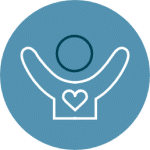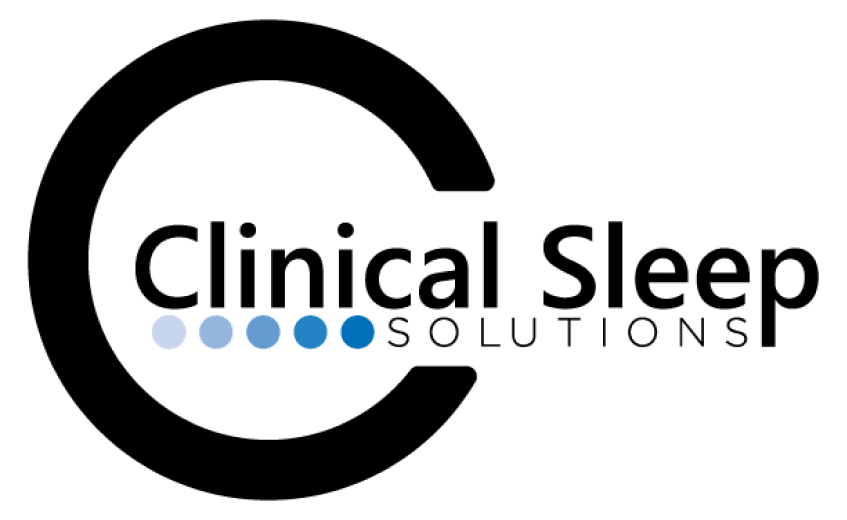Treating Sleep Apnea
After your diagnosis is confirmed by your doctor, Clinical Sleep Solutions will collaborate with both you and your physician to identify the most suitable treatment plan, focusing on post-diagnosis CPAP therapy customization.
The primary aim of sleep apnea treatment is to ensure your airway remains open while you sleep, and effectiveness varies among different treatments.
Given the varying degrees of sleep apnea severity, Clinical Sleep Solutions specializes in CPAP therapy, widely acknowledged as the most effective approach to treat sleep apnea.
CPAP therapy is regarded as the gold standard in treating sleep apnea.

How CPAP Therapy Works
CPAP, which stands for ‘continuous positive airway pressure,’ involves a compact bedside device that generates a steady air stream, maintaining an open airway as you sleep. This air flows through a tube connected to a mask that you wear each night. Thanks to technological advancements, CPAP therapy has become increasingly comfortable.
In tailoring your CPAP therapy, consider these steps:
- Select the appropriate CPAP machine.
- Choose a mask that matches your breathing style (mouth or nose breathing) and fits the unique contours of your face and head.
- Explore accessories for added comfort, like humidity chambers to moisten the air, or tube swivels for easier movement during sleep.
- Adjust the air pressure settings to balance effectiveness and comfort.
Your clinician will guide you on using the machine and offer tips for adapting to the therapy.
Most insurance plans cover a significant portion of CPAP therapy costs. While Clinical Sleep Solutions does not directly handle insurance verification, we can provide guidance on navigating the insurance process and offer flexible payment solutions.
You’ll have regular check-ins with your clinician during the initial weeks of treatment. They’ll monitor your progress, make necessary adjustments, and offer continuous support.
While some patients notice immediate improvements with CPAP therapy, many experience substantial benefits after the first 30 days of consistent use.
The Advantages of CPAP Therapy
Embracing CPAP therapy for sleep apnea is a lifelong journey that offers significant rewards. Many patients at Clinical Sleep Solutions report not realizing the extent to which OSA had been adversely affecting their lives until they experienced the transformative impact of CPAP therapy.
• Noticeably less snoring
• Deeper, more restful sleep for both you and your partner
• Enhanced heart health
• Improvement in intimate relationships
• Boost in energy levels
• Better mood and emotional balance
• Healthier skin appearance
• Reduction in headaches
• Enhanced memory and cognitive functions
• Improved concentration and performance at work
• Decreased risk of motor vehicle and workplace accidents
• Lowered risk of developing diabetes
• Strengthened immune system response
It’s crucial to understand that CPAP therapy manages sleep apnea symptoms effectively, but it isn’t a cure. The benefits of CPAP are most evident and sustained while actively using the therapy. Discontinuing CPAP use can lead to the return of breathing interruptions and sleep apnea symptoms.
Ongoing Support and Care at Clinical Sleep Solutions
At Clinical Sleep Solutions, our commitment to enhancing your quality of life extends well beyond the initial setup of your CPAP therapy. We schedule regular check-ins after the first 30 days to track your progress and ensure the therapy is effective.
Think of your clinician as a personal coach on your journey to better sleep health. They are there to guide you towards your goals, monitor for any unusual patterns in your sleep data that might need additional medical attention, and provide continuous encouragement and support.
Your clinician at Clinical Sleep Solutions is dedicated to being your supportive partner throughout your CPAP therapy journey.
We’re always ready to assist with any questions or support you may need. Understanding that each patient’s journey is unique, we offer personalized care as frequently as required. All follow-up care is included for the lifetime of your CPAP machine, ensuring you always have the support you need.
Maintain Optimal CPAP Therapy with Regular Accessory Replacements
Committing to CPAP therapy with Clinical Sleep Solutions is a step towards better health. However, to maximize its benefits, it’s important to maintain your equipment regularly. Here’s why:
- The seal of your mask degrades over time due to skin oils. A worn mask may need overtightening, leading to leaks and poor fit.
- CPAP tubes can develop tiny punctures, diminishing the effectiveness of your therapy.
- Regular use exposes your equipment to skin and breath, making them susceptible to bacterial and fungal accumulation, even with routine cleaning.
To ensure your CPAP therapy remains comfortable and effective, we recommend refreshing your supplies according to this schedule:
- Mask – Every 6 months
- Tubing – Every 6 months
- Water chamber – Every 6 months
- Filters – Every 2-3 months

Many insurance plans offer coverage for CPAP accessories once or twice a year. Our team at Clinical Sleep Solutions is ready to assist you in verifying your coverage.
Reach out to our Continuing Care team at Clinical Sleep Solutions to order new supplies and maintain the full benefits of your CPAP therapy!
Need Guidance on Sleep Apnea Treatment?
If you’ve already been prescribed CPAP therapy and are seeking assistance to thrive with your treatment, we’re here to help. And if you suspect you might have sleep apnea but haven’t received a diagnosis yet, consider scheduling a consultation for CPAP therapy with Clinical Sleep Solutions.


